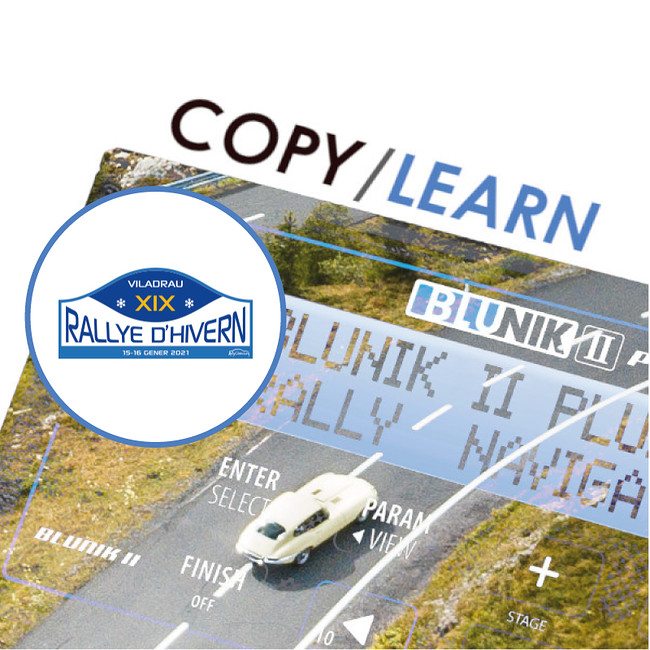COPY/ LEARN Mode in Rally d’Hivern
For Blunik II PLUS
The organization of RallyClassics likes to innovate within the spirit of regularity. This is what defines sport and competition and also takes us out of monotony.
Here are the functions of the Blunik II PLUS that can help you. As always, you first have to read the rules and try to understand what the regularity test is about in the rally you are participating in.
The challenge is to achieve:
- Doing the first pass through the ZR following an average speed.
- Doing the second pass through the ZR following the same passing-times you did in first pass.
To do this, we’ll have to do a first pass of the stage in AVERAGE SPEED mode (AS), then when we want to repeat the stage we'll do it in the COPY mode (Co).
We’ll have to use sections ST30 to ST35 which are the ones that Blunik II PLUS always registers in sections ST40-45 (as if they were a Learn section)
In the first pass we’ll use stages from ST30-35 (ST33 for example) in AS mode.
To copy the stages we will only use sectors from ST40 to ST45. Sectors from ST40 to ST44 have each a 20 minute capacity, whereas sector ST45 has a capacity of up to 120 minutes.
In any case, if we run out of time in ST40, the Blunik will not stop, it will consume memory from the next sector (ST41) and will continue to do so subsequently.
To program the stages to copy (first pass), we'll do as follows:
- The first pass (or reference pass) will be in AVERAGE SPEED “AS” mode.
- From the screen, with the + and – keys we'll choose a stage to program (for example ST33).
- We'll press STAGE to enter the stage edition.
- With the +, - and arrow keys we'll set the starting time and the total time of the stage.
- We'll press MODE until we see AVERAGE MODE “As”
- We'll press ENTER to quit.
The procedure to start the stage is the same as for any other stage:
- We'll press STAGE to access the stage followed by START at the beginning of the stage.
- We'll press FINISH at the end of the stage.
To program the stage to copy (the second or later passes) the procedure will be:
- With the + and – keys we'll choose the stage we have registered (ST43 in our example).
- We'll press STAGE to access the stage edition.
- We'll press MODE until we see TIME COPY “Co”.
- We'll press ENTER to quit.
Attention! Stages 40 to 45 don't have the synchronized start function so you have to press START exactly at the starting time at the starting line. This is so to be able to use this function to copy laps in a circuit.
During the passes to copy, the Blunik will show us the difference in meters or seconds of the passing times registered.
- We'll press FINISH when the stage is over.
Now you know a little more about your Blunik II PLUS and of the copy stage function. For more information you can always consult the instruction manual.
Note: The Blunik II PLUS always registers sections ST30-ST35 on the ST40-45 programming. The Blunik II does not have this feature.
Pages 39-40 of the Blunik II Plus manual.





